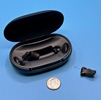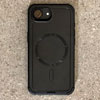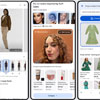 Whether it’s at the airport, a coffee shop or hotel room, chances are there’s access to free Wi-Fi. According to recent studies by the Internet security company Norton, 44 percent of us jump onto these free networks to check email, 42 percent post updates to Facebook and other social networking sites and 16 percent access our bank accounts.
Whether it’s at the airport, a coffee shop or hotel room, chances are there’s access to free Wi-Fi. According to recent studies by the Internet security company Norton, 44 percent of us jump onto these free networks to check email, 42 percent post updates to Facebook and other social networking sites and 16 percent access our bank accounts.
The issue with these free Wi-Fi hotspots is that anyone on the network can see the data your computer or mobile device sends across the Internet, whether that’s a request to see a news article on Techlicious or your Facebook News Stream, if you don’t have a secure HTTPS connection. (You can easily see if you have a secure connection by checking your browser’s address bar). This issue got a lot of attention last year when many Facebook and other accounts were hijacked on public networks with a simple Firefox browser add-on called Firesheep. Even if you do have an HTTPS connection, people can see where you’re going. (See more about browsing the Web anonymously.)
Fortunately, it’s easy to create a secure connection on public Wi-Fi by using Virtual Private Network (VPN) software. Essentially, VPN software encrypts your data, creating a secure tunnel between your computer or mobile device and the VPN server. The VPN server then forwards your information to the site you’re accessing. So no one on your network can see where you are going or what data you’re sending and the website you’re visiting won’t see where you’re coming from.
There are good free VPN services , including Hotspot Shield (Pcs, Macs, iOS and Android) and TunnelBear (for PCs, Macs and Android), but you’ll have to deal with ads or data limits. We like Witopia ($50 per year for PCs, Macs, iOS and Android), StrongVPN ( $55 per year for PCs, Macs and Android) and the recently released Norton Hotspot Privacy ($49 per year for PCs, Macs and iOS devices). Norton Hotspot Privacy also has a day pass for $2.99 and a one-month pass for $19.99.















